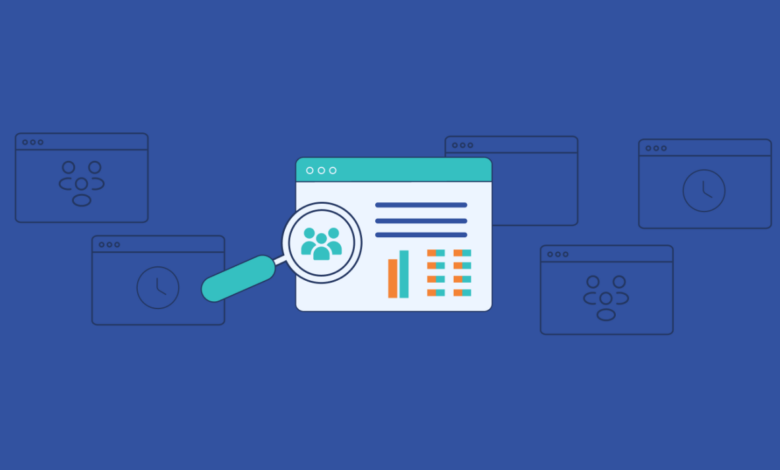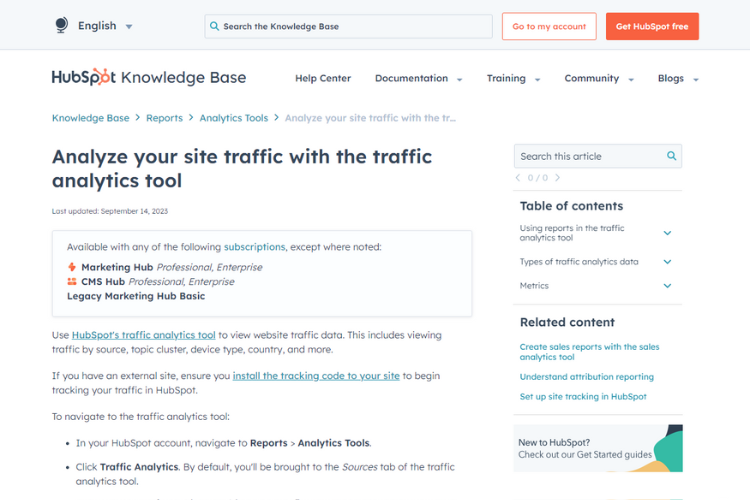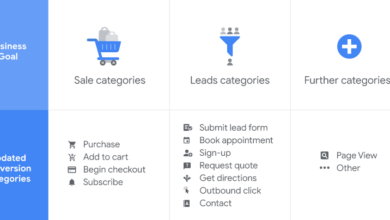
How to Check Website Traffic Your Complete Guide
How to check website traffic is crucial for any website owner. Understanding your site’s performance is key to identifying areas for improvement and making data-driven decisions. This guide will walk you through various methods, from free tools to paid analytics platforms, helping you grasp the vital metrics that shape your online presence. We’ll cover everything from unique visitors and page views to bounce rates and average session durations, giving you the knowledge to interpret your data effectively.
Gain a deeper understanding of your website’s traffic patterns, identify your most effective traffic sources, and learn how to track your progress over time. We’ll also explore how to visualize this data and troubleshoot any issues you might encounter. This guide equips you with the tools and strategies to optimize your website’s performance and achieve your online goals.
Introduction to Website Traffic Metrics
Understanding your website’s traffic is crucial for evaluating its performance and identifying areas for improvement. Website traffic metrics provide valuable insights into user behavior, engagement, and overall success. By analyzing these metrics, businesses and website owners can optimize their strategies for increased conversions, improved user experience, and enhanced profitability.Website traffic metrics are like a detailed report card for your website.
They show you how many people are visiting, how they’re interacting with your content, and how long they’re staying. This data is essential for making informed decisions about website design, content creation, marketing campaigns, and overall strategy.
Key Website Traffic Metrics, How to check website traffic
Website traffic metrics are essential indicators of how well your website is performing. They reveal valuable insights into user behavior, engagement, and overall success.
- Unique Visitors: This metric counts the number of individual visitors to your website over a specific period. It’s crucial for understanding the overall reach of your site and the number of distinct users interacting with your content. A high number of unique visitors generally indicates strong visibility and successful marketing efforts.
- Page Views: Page views represent the total number of pages viewed on your website. This metric provides insights into the popularity of specific pages and content, as well as the overall level of user engagement with your site.
- Bounce Rate: The bounce rate measures the percentage of visitors who leave your website after viewing only one page. A high bounce rate might indicate that your website’s content, design, or landing pages are not engaging or relevant to the user’s search. A high bounce rate can also suggest issues with website navigation or user experience.
- Average Session Duration: This metric calculates the average time visitors spend on your website during a single session. A longer average session duration suggests that visitors find your content valuable and engaging. This metric is often correlated with a lower bounce rate, indicating a positive user experience.
Methods to Collect Website Traffic Data
Various methods are available for collecting website traffic data. Choosing the right method depends on your specific needs and resources.
- Web Analytics Tools: Tools like Google Analytics, Adobe Analytics, and others provide comprehensive data on website traffic, user behavior, and engagement. They collect data on various metrics, including page views, unique visitors, bounce rate, and conversion rates.
- Server Logs: Server logs record all interactions with your website, providing detailed information about user activity, requests, and responses. While more technical, server logs can offer deeper insights into user behavior and potential issues.
- Third-Party Tracking Tools: Specialized third-party tools can offer specific insights into user behavior, demographics, and interests, enabling you to tailor your content and marketing strategies to specific audience segments.
Importance of Tracking Website Traffic
Tracking website traffic is vital for understanding how users interact with your website and identifying areas for improvement. This data is instrumental in optimizing content, improving user experience, and enhancing marketing campaigns. By understanding traffic patterns, you can make data-driven decisions to maximize website effectiveness.
- Content Optimization: Analyzing traffic data helps identify popular and less popular pages, allowing you to create more content that resonates with your audience and optimize underperforming pages.
- Marketing Campaign Improvement: Traffic data can reveal which marketing channels are driving the most traffic and engagement, allowing you to allocate resources effectively and optimize your marketing strategies.
- User Experience Enhancement: By tracking how users navigate your website, you can identify pain points and optimize user experience to reduce bounce rates and improve engagement.
Relationship Between Website Traffic Metrics
A table illustrating the relationship between key website traffic metrics can provide a clear overview of their interdependence.
| Metric | Description | Relationship to Other Metrics |
|---|---|---|
| Unique Visitors | Number of distinct users visiting the website | High unique visitors often correlate with high page views and low bounce rates. |
| Page Views | Total number of pages viewed | Higher page views generally indicate more engagement, but bounce rate can be a crucial factor. |
| Bounce Rate | Percentage of visitors leaving after viewing one page | High bounce rates might suggest issues with website content, navigation, or relevance. Often inversely related to average session duration. |
| Average Session Duration | Average time spent on the website per session | A longer average session duration suggests increased user engagement and interest in the content. Often positively correlated with low bounce rates. |
Free Website Traffic Analysis Tools
Analyzing website traffic is crucial for understanding user engagement and optimizing your online presence. Knowing where your visitors are coming from, what pages they’re interacting with, and how long they’re staying can significantly impact your strategy for growth and improvement. Free tools offer a fantastic starting point for beginners and smaller businesses, providing insights without hefty price tags.Free website traffic analysis tools offer a wealth of data without the need for a significant investment.
These tools can help you track key metrics, understand user behavior, and identify areas for improvement on your website. By leveraging these free resources, you can gain valuable insights to refine your online strategies.
Popular Free Website Traffic Analysis Tools
Free tools provide a practical starting point for understanding website traffic. They empower users to monitor key metrics and make informed decisions without substantial financial commitment. Choosing the right tool often depends on specific needs and technical expertise.
Comparison of Free Website Traffic Analysis Tools
| Tool Name | Key Features | Pros | Cons |
|---|---|---|---|
| Google Analytics (Free Version) | Comprehensive tracking of website traffic, user behavior, and conversion rates. Includes detailed reports, customizable dashboards, and integrations with other Google services. | Extremely powerful and widely used, offering a vast array of data and features. Integration with other Google products is seamless and valuable. | Can be overwhelming for beginners due to the sheer volume of data. Requires some technical understanding to fully utilize advanced features. |
| SimilarWeb | Provides insights into website traffic, including competitor analysis, market share, and traffic sources. Offers a simplified interface compared to Google Analytics. | Excellent for competitive analysis, offering valuable insights into industry trends and competitor performance. Offers a good overview of traffic sources and engagement. | Limited customization compared to Google Analytics. Data may not be as granular as other options. May not be ideal for highly specific analysis. |
| SEMrush (Basic Plan) | Focuses on and research, but also provides some traffic analysis data. Includes tools to analyze competitor s, backlink profiles, and website traffic sources. | Provides valuable insights into performance and research, helping optimize content and strategy. Offers data on backlinks and traffic sources. | Limited traffic analysis features compared to dedicated traffic analysis tools. Free plan may have restrictions on data volume or features. focus may not be suitable for all needs. |
| Ubersuggest | A comprehensive tool that offers some traffic analysis capabilities. Provides research, content analysis, and competitor analysis alongside traffic data. | Provides a combination of tools and traffic analysis, useful for businesses focusing on search engine optimization. Offers insights into opportunities and content performance. | May not be as robust for in-depth traffic analysis as dedicated tools. Free plan often has limitations on features and data volume. |
Paid Website Traffic Analysis Tools
Diving deeper into website traffic analysis, free tools often have limitations. Paid tools offer a more comprehensive understanding of user behavior, providing actionable insights for optimizing website performance. They provide detailed data and features that free tools typically lack, offering greater clarity and control over traffic analysis.
Popular Paid Website Traffic Analysis Tools
Paid website traffic analysis tools provide a wealth of information that surpasses the capabilities of free alternatives. These tools offer robust features for tracking and analyzing website traffic, providing deep insights into user behavior and site performance. Key examples include Google Analytics 360, SEMrush, Ahrefs, and SimilarWeb. Each platform offers a unique blend of functionalities, and their value proposition is tailored to different needs.
Functionality of Popular Paid Tools
These platforms offer advanced features not readily available in free options. Google Analytics 360, for instance, provides unparalleled access to data and advanced reporting capabilities. SEMrush excels in analysis, providing insights into competitor strategies and performance. Ahrefs is a strong competitor in the domain, also providing comprehensive data on backlinks and research. SimilarWeb is well-regarded for its market research features, helping users understand competitive landscapes and market trends.
Tools like these are particularly useful for large businesses, e-commerce sites, or individuals managing multiple websites.
Advantages of Paid Tools over Free Tools
Paid tools provide significantly more comprehensive data than their free counterparts. They offer more granular insights into user behavior, providing a richer understanding of visitor demographics, geographic location, and engagement patterns. Furthermore, the advanced reporting features often allow for customized dashboards, enabling users to track specific KPIs and generate tailored reports. The extensive data available with paid tools can be invaluable for making data-driven decisions and optimizing website strategies.
This level of detail can lead to significant improvements in website performance, conversion rates, and overall profitability.
Disadvantages of Paid Tools
While paid tools offer substantial advantages, they come with a price tag. The cost of these tools can be prohibitive for smaller businesses or individuals. Moreover, the steep learning curve for some of these platforms might be a barrier for users who are unfamiliar with complex data analysis. Finally, data privacy concerns are a crucial consideration. Users must ensure that the chosen tool adheres to privacy regulations and their own data handling policies.
Comparison Table: Paid vs. Free Website Traffic Analysis Tools
| Feature | Free Tools | Paid Tools |
|---|---|---|
| Data Granularity | Limited | High |
| Customizable Reports | Limited | Extensive |
| Advanced Segmentation | Basic | Advanced |
| Competitor Analysis | Minimal | Comprehensive |
| Research | Limited | Extensive |
| Pricing | Free | Subscription-based |
Specific Benefits of Using Paid Website Traffic Analysis Tools
Paid tools offer a variety of benefits for website owners and marketers. These benefits include:
- Enhanced data insights: Paid tools provide a more in-depth understanding of user behavior, enabling more informed decisions.
- Actionable insights: The detailed data allows for the identification of areas needing improvement, leading to strategic adjustments and optimized performance.
- Competitive advantage: Understanding competitor strategies and market trends provides a critical edge in the online landscape.
- Improved ROI: By identifying areas for optimization and improvement, businesses can increase revenue and maximize returns on their investments.
Analyzing Traffic Sources

Understanding where your website visitors are coming from is crucial for optimizing your marketing efforts and improving your site’s performance. Knowing which channels are driving the most valuable traffic allows you to allocate resources effectively and focus on strategies that yield the best results. This analysis reveals not just the quantity of traffic, but also the quality and intent of the visitors.Analyzing traffic sources goes beyond simply counting visits.
It delves into the motivations behind those visits, allowing you to tailor content and campaigns to resonate with specific audiences. This granular understanding is key to achieving higher conversion rates and ultimately, business growth.
Different Traffic Sources
Various channels contribute to website traffic. Understanding the unique characteristics of each source is vital for targeted optimization. Each source often brings visitors with different expectations and behaviors. For example, visitors from organic search are often actively seeking information, while those from social media might be more casually browsing.
- Organic Search: Users find your website through search engine results pages (SERPs) without paying for advertising. This indicates strong efforts and valuable content that aligns with user search queries.
- Social Media: Traffic from social media platforms like Facebook, Twitter, Instagram, and others signifies the influence of your social media presence and engagement.
- Referrals: Users arrive at your website from another website that links to yours. This indicates a relationship or partnership with other relevant websites and a potential endorsement from their audience.
- Paid Advertising: Users are directed to your site through paid advertising campaigns, such as Google Ads or social media ads. This requires ongoing budget allocation and necessitates careful tracking to gauge effectiveness.
Identifying Effective Traffic Sources
Pinpointing the most effective traffic sources involves more than just sheer volume. Consider the conversion rates and the value each source brings. For example, organic search traffic often translates to higher conversion rates because users actively seek information related to your offerings. While social media traffic might be higher in volume, the conversion rate might be lower if the visitors are not actively searching for a specific product or service.
- Conversion Rates: Track the percentage of visitors from each source who complete desired actions, such as making a purchase, filling out a form, or subscribing to a newsletter. Higher conversion rates indicate a more effective source.
- Value Per Visit: Calculate the average revenue or value generated by visitors from each channel. This provides a more holistic view of the profitability of each source.
- Cost Per Acquisition (CPA): For paid advertising, measure the cost associated with acquiring a customer from each source. This helps in determining the ROI of each advertising campaign.
Separating Traffic from Different Sources
Website analytics platforms provide detailed data on traffic sources. These platforms offer tools to segment traffic and analyze the performance of each source. Using these tools, you can identify trends and patterns within your data.
Figuring out how much traffic your website gets is crucial for understanding its performance. Tools like Google Analytics are fantastic for this, showing you page views, bounce rates, and more. However, delving deeper into the why behind website traffic often requires a nuanced understanding of concepts like “quia reprehenderit aut exercitationem,” a fascinating area of study in digital marketing quia reprehenderit aut exercitationem.
Ultimately, knowing how to check website traffic is just the first step in truly optimizing your online presence.
- Use of UTM Parameters: Adding unique tracking parameters to your links allows you to precisely track traffic from different sources. This is vital for accurately attributing website traffic to specific marketing campaigns.
- Analytics Platform Features: Most website analytics platforms, such as Google Analytics, offer filters and segments to isolate traffic from specific channels. These tools enable deep dives into traffic patterns and behaviors.
Traffic Source Contributions
The following table illustrates the contribution of various traffic sources to website traffic. Note that these values are examples and will vary greatly based on the website and industry.
| Traffic Source | Percentage of Total Traffic | Conversion Rate | Value per Visit |
|---|---|---|---|
| Organic Search | 45% | 3% | $50 |
| Social Media | 25% | 1% | $20 |
| Referrals | 15% | 2% | $75 |
| Paid Advertising | 15% | 4% | $100 |
Interpreting Website Traffic Data: How To Check Website Traffic
Understanding your website’s traffic data isn’t just about seeing numbers; it’s about deciphering the story behind them. By interpreting these metrics, you gain insights into user behavior, identify potential problems, and uncover opportunities for improvement. This allows for data-driven decisions to optimize your website’s performance and achieve your online goals.Effective interpretation requires a holistic approach, considering not only the raw numbers but also the context surrounding them.
This involves looking at trends over time, comparing different segments of your audience, and understanding the factors that influence these patterns.
Common Patterns and Trends in Website Traffic Data
Analyzing website traffic data often reveals predictable patterns. Understanding these patterns allows you to anticipate future trends and adjust your strategies accordingly. For instance, seasonal fluctuations are common, with increased traffic during holiday periods or specific events. Traffic spikes might also correlate with promotional campaigns, new product launches, or social media buzz.
Identifying Potential Problems and Opportunities in Website Traffic
Deciphering website traffic data helps you pinpoint potential problems and opportunities. For example, a sudden drop in traffic could indicate a technical issue with your website, a problem with your marketing campaigns, or a shift in user preferences. Conversely, a consistent increase in traffic from a specific source could signal a successful marketing strategy that should be further optimized.
Interpreting Traffic Data to Improve Website Performance
Effective interpretation of traffic data enables you to make informed decisions to enhance your website’s performance. A significant portion of your website’s traffic might be coming from a particular geographical region. This could point to the need for localization efforts to cater to that audience better, possibly by offering content in their native language or adapting your product offerings to their preferences.Another example: If bounce rate is unusually high on a specific page, it suggests that the page content or design isn’t engaging users.
Want to know how many people are visiting your website? Checking website traffic is crucial for understanding your online presence. Knowing this data helps you tailor your SEO strategy. A good understanding of SEO, like what’s covered in seo search engine optimization marketing explained , is essential for maximizing those visits. Tools like Google Analytics provide valuable insights into user behavior and traffic sources, ultimately guiding your efforts to improve website traffic.
Improving the clarity of the page’s content, adding visuals, or refining the call-to-action could significantly improve user engagement.Analyzing traffic data from various sources, such as search engines, social media, and referrals, helps pinpoint where your traffic is coming from. By understanding the sources of traffic, you can prioritize your marketing efforts to optimize your website’s performance.
Tracking Website Traffic Over Time
Understanding website traffic trends over time is crucial for optimizing your site and achieving your goals. By analyzing how traffic changes over various periods, you can identify patterns, understand user behavior, and make data-driven decisions. This allows for targeted improvements and a more effective strategy for attracting and engaging visitors.
Methods for Tracking Website Traffic Over Time
Tracking website traffic over time requires consistent data collection and analysis. Several methods are available, each offering unique insights. Tools like Google Analytics provide comprehensive data on various aspects of website traffic, including the number of visits, bounce rate, and time on site. Utilizing these features allows for a deeper understanding of visitor behavior.
Identifying Patterns and Trends in Website Traffic Data
Website traffic patterns can reveal valuable insights into user behavior and website performance. For instance, a consistent increase in traffic during specific months or times of day might indicate seasonal trends or popular promotions. Fluctuations in traffic, such as drops or surges, often correspond to specific events, changes in the website, or external factors.
Comparing Traffic Data from Different Periods
Comparing traffic data from different periods allows for a more nuanced understanding of website performance. This comparison can involve comparing data from different months, seasons, or years. Analyzing the difference between periods helps in pinpointing factors influencing traffic variations. By understanding these patterns, you can refine your strategies for future success. For instance, if traffic increases during a marketing campaign, this provides evidence of its effectiveness.
Organizing Traffic Data Over Time
A well-structured table is essential for organizing traffic data collected over time. The table should clearly display the date range, the number of visits, unique visitors, bounce rate, and other relevant metrics. This allows for easy analysis and comparison of data across different periods.
| Date Range | Total Visits | Unique Visitors | Bounce Rate (%) | Average Session Duration (minutes) |
|---|---|---|---|---|
| January 1 – January 31, 2024 | 10,500 | 5,200 | 45 | 3.2 |
| February 1 – February 29, 2024 | 12,000 | 6,500 | 42 | 3.5 |
| March 1 – March 31, 2024 | 11,800 | 6,200 | 48 | 3.0 |
This table presents a simplified example of how to track website traffic over time. Data should be adapted to reflect the specific metrics and timeframe relevant to the website’s performance. For instance, including data on specific marketing campaigns can provide a more detailed analysis of their impact on traffic.
Website Traffic Data Visualization
Understanding website traffic data is crucial for optimizing performance and making informed decisions. However, raw data points can be overwhelming. Effective visualization techniques transform this data into easily digestible insights, revealing patterns, trends, and potential problems at a glance. Visual representations make it significantly easier to identify areas for improvement, understand user behavior, and track the effectiveness of marketing campaigns.Data visualization, in the context of website traffic, allows for a quick and comprehensive overview of key performance indicators (KPIs).
By presenting this information graphically, stakeholders can quickly grasp the overall health of the website and pinpoint specific areas needing attention, such as traffic sources, user engagement, and conversion rates.
Methods for Visualizing Website Traffic Data
Different visualization methods effectively convey various aspects of website traffic data. Choosing the right method depends on the specific insights you seek. For example, line graphs are ideal for tracking trends over time, while bar charts excel at comparing different categories.
Figuring out website traffic is crucial for any business. Tools like Google Analytics are great for basic traffic data, but digging deeper can reveal valuable insights. Understanding user behavior is key, and that’s where heat map marketing explained comes in handy. Heat map marketing explained provides a visual representation of where visitors click and scroll on your site, helping you identify problem areas and optimize the user experience.
Ultimately, this data helps you fine-tune your website for better traffic and conversions.
Types of Graphs and Charts
Various types of graphs and charts can be used to visualize website traffic data. Here are some common examples:
- Line Graphs: These are excellent for displaying trends over time. For instance, you can track daily website visits over a month to identify seasonal patterns or weekly fluctuations. The smooth line connecting data points allows for easy identification of growth or decline.
- Bar Charts: Ideal for comparing website traffic across different categories, such as traffic sources (organic search, social media, referrals). The height of each bar represents the traffic volume from each source, making it easy to see which channels are driving the most traffic.
- Pie Charts: Useful for illustrating the proportion of website traffic coming from various sources. Each slice of the pie represents a specific source, and its size corresponds to its percentage of total traffic. This type of visualization is particularly helpful for understanding the distribution of your traffic.
- Area Charts: Similar to line charts, area charts also show trends over time, but they visually emphasize the accumulated value over a period. This is beneficial for illustrating the total traffic generated over a given time frame, showcasing the overall growth or decline.
- Scatter Plots: These graphs are useful for identifying correlations between variables, such as the relationship between time spent on site and conversion rates. Scatter plots can reveal trends and patterns that might not be apparent in other visualizations.
Choosing the Right Visualization Tool
Selecting the right visualization tool depends on factors like the type of data being visualized, the level of customization needed, and the user’s technical skills. Different tools cater to different needs and preferences.
| Visualization Tool | Benefits |
|---|---|
| Google Data Studio | Highly customizable, integrates with Google Analytics, and offers a wide range of visualization options. |
| Tableau | Powerful data visualization tool with advanced features for creating interactive dashboards and reports. |
| ChartBlocks | User-friendly platform with a wide array of templates and options, enabling quick and easy creation of engaging visualizations. |
| Microsoft Power BI | Provides extensive data analysis capabilities and interactive visualizations for creating insightful reports and dashboards. |
| Infogram | Excellent for creating visually appealing and shareable infographics, ideal for presenting data in a clear and concise manner. |
Troubleshooting Website Traffic Issues
Website traffic is a critical indicator of a website’s health and performance. Understanding how to identify and resolve traffic problems is essential for optimizing user experience and achieving business goals. This section delves into common issues, diagnostic methods, and troubleshooting strategies for different types of traffic problems.Troubleshooting website traffic issues requires a systematic approach. It involves analyzing various factors, from server performance to content quality, and applying targeted solutions to restore optimal traffic flow.
Common Website Traffic Issues
Website traffic issues can stem from a multitude of problems. Identifying the root cause is the first step in effective troubleshooting. Common issues include slow loading times, low organic search traffic, decreased social media referrals, and unexpected spikes or drops in traffic.
Diagnosing Website Traffic Problems
Diagnosing website traffic problems requires a multifaceted approach. Examining website analytics, server logs, and user feedback provides crucial insights. Analyzing user behavior patterns, such as bounce rates and session durations, can pinpoint areas needing improvement. Checking for technical errors, such as broken links or slow server response times, is crucial.
Troubleshooting Methods for Different Types of Traffic Issues
Troubleshooting methods vary based on the nature of the traffic issue. For instance, slow loading times may require optimizing images, minimizing HTTP requests, or upgrading server infrastructure. A sudden drop in organic traffic could indicate algorithm changes, content quality issues, or technical errors. Decreased social media referrals may stem from ineffective social media campaigns or a lack of engagement.
Using Website Traffic Data to Identify and Resolve Problems
Website traffic data offers valuable insights for identifying and resolving problems. Analyzing bounce rates, time on site, and conversion rates helps pinpoint areas where the user experience needs improvement. By correlating traffic data with other metrics, such as website performance and server logs, you can effectively diagnose the source of any traffic issues. Tracking specific traffic sources, such as social media or search engines, allows for targeted solutions to address declining traffic from those channels.
- Slow Loading Times: Slow loading times can significantly impact user experience and drive away visitors. Factors contributing to slow loading times include large image files, excessive HTTP requests, and inefficient server response times. Optimizing images, minimizing HTTP requests, and upgrading server infrastructure are crucial for addressing this issue.
- Low Organic Search Traffic: Organic search traffic is often a primary source of website visitors. A decline in organic search traffic may be attributed to algorithm changes, content quality issues, or technical errors. Analyzing rankings, backlink profiles, and content performance can identify the specific factors causing the problem. Implementing best practices and creating high-quality content can help improve organic search rankings.
- Decreased Social Media Referrals: Social media referrals can be a substantial source of website traffic. A decline in social media referrals may indicate ineffective social media campaigns, a lack of engagement, or a shift in user behavior. Optimizing social media content, increasing engagement, and targeting the right audience are essential for boosting social media referrals.
Analyzing Traffic Sources for Targeted Solutions
Identifying the source of traffic problems enables the implementation of targeted solutions. For example, if organic search traffic is declining, a review of rankings and backlink profiles is necessary. If social media referrals are down, analyzing engagement levels and content performance will help pinpoint the cause. Understanding where your traffic is coming from is crucial for effective troubleshooting.
Improving Website Traffic

Driving more visitors to your website is crucial for achieving your online goals, whether it’s increasing sales, building brand awareness, or gathering leads. A robust strategy for improving website traffic is essential for online success. This involves understanding your audience, analyzing your current performance, and implementing tactics to attract more users.
Strategies for Attracting More Visitors
Effective website traffic improvement strategies often revolve around a combination of organic and paid methods. Organic strategies focus on improving search engine rankings and attracting users naturally, while paid strategies involve advertising to target specific audiences. A balanced approach is often the most effective.
Search Engine Optimization ()
Optimizing your website for search engines is fundamental to driving organic traffic. This involves research, on-page optimization (like meta descriptions and title tags), and off-page optimization (building backlinks from reputable sources). Understanding user search intent and creating content that satisfies those needs is key to ranking higher in search results. Regularly updating content and ensuring site speed and mobile responsiveness are crucial for search engine visibility.
Content Marketing
Creating valuable and engaging content is paramount to attracting and retaining visitors. This includes blog posts, articles, videos, infographics, and other formats. High-quality content that addresses user needs and interests will improve your site’s visibility and attract more organic traffic. Promoting this content through social media and other channels amplifies its reach.
Social Media Marketing
Leveraging social media platforms to promote your website and engage with your audience is essential for attracting new visitors. Identifying the platforms where your target audience is most active and tailoring your content to resonate with them is crucial. Creating compelling posts, running targeted ads, and fostering community engagement are vital steps in social media marketing.
Paid Advertising
Paid advertising campaigns can quickly drive traffic to your website. Platforms like Google Ads and social media ads allow you to target specific demographics, interests, and locations. A well-structured campaign with compelling ad copy and targeted s can significantly increase website visits. Closely monitoring campaign performance and adjusting strategies based on data are vital.
Email Marketing
Building an email list and sending targeted newsletters can nurture leads and drive traffic to your website. Offering valuable content, exclusive discounts, or early access to new products in exchange for email sign-ups is a good strategy. Consistent and engaging email communication builds loyalty and drives traffic.
Table of Actionable Steps to Improve Website Traffic
| Actionable Step | Effect |
|---|---|
| Research | Identify relevant s to target for |
| On-Page Optimization | Improve website visibility in search engine results |
| Content Creation | Attract visitors through valuable and engaging content |
| Social Media Promotion | Increase brand awareness and drive traffic |
| Paid Advertising Campaigns | Target specific audiences and quickly drive traffic |
| Email Marketing | Nurture leads and drive targeted traffic to website |
| Website Analytics Tracking | Measure the success of different strategies and adjust accordingly |
Illustrative Examples of Traffic Data
Understanding website traffic data is crucial for any online business. It’s not just about the numbers; it’s about deciphering the stories behind them. These stories reveal user behavior, marketing effectiveness, and the overall health of your online presence. Analyzing patterns and trends in your traffic data allows for informed decisions, optimized strategies, and ultimately, greater success.Analyzing website traffic data involves identifying patterns, trends, and fluctuations in visitor numbers and behavior.
This can include examining the impact of seasonal changes, promotional campaigns, and changes in search engine algorithms on your site’s traffic. For instance, a sudden spike in traffic might indicate a successful social media campaign, while a steady decline could point to issues with your website’s or content strategy.
Typical Website Traffic Patterns
A typical website might see a steady increase in traffic throughout the year, with peaks during holiday seasons and promotional periods. The traffic can fluctuate based on user interests and search patterns. A drop in traffic might suggest a need to improve site content or user experience. Understanding these natural fluctuations is vital for identifying anomalies and effective strategies to mitigate or leverage them.
Illustrative Examples of Successful Traffic Increase Strategies
Several strategies can lead to a significant increase in website traffic. Implementing a robust strategy is crucial. Optimizing content for relevant s, building high-quality backlinks, and improving website loading speed are all vital elements of an effective strategy. Content marketing, which involves creating and sharing valuable content, can also attract a wider audience. Social media marketing plays a vital role in driving traffic to a website by promoting content and engaging with potential customers.
Paid advertising campaigns can also yield substantial results, targeting specific demographics and interests.
Impact of Traffic Improvement Techniques on Data
Implementing these strategies can have a noticeable impact on website traffic data. For instance, a successful campaign might result in a consistent increase in organic search traffic over several months. Similarly, a targeted social media campaign could lead to a significant increase in referral traffic from social media platforms. Data visualization tools are crucial for identifying and measuring the impact of these techniques.
Data Representation of Key Changes and Trends
| Metric | Before Implementation | After Implementation | Change | Trend |
|---|---|---|---|---|
| Organic Search Traffic | 10,000 visits/month | 15,000 visits/month | +50% | Increasing |
| Social Media Referral Traffic | 2,000 visits/month | 5,000 visits/month | +150% | Increasing |
| Conversion Rate | 2% | 3% | +50% | Increasing |
| Bounce Rate | 40% | 30% | -10% | Decreasing |
This table illustrates how implementing strategies can positively impact key website traffic metrics. Noticeable increases in organic search traffic and social media referral traffic, along with improvements in conversion rates and a decrease in bounce rate, demonstrate the positive effect of implementing the strategies.
Closure
In conclusion, tracking website traffic is an essential aspect of website management. By understanding the various metrics, tools, and techniques discussed in this guide, you can gain valuable insights into your website’s performance and make informed decisions to improve its effectiveness. From free to paid analytics tools, analyzing traffic sources, and visualizing data, this comprehensive guide equips you with the knowledge to monitor and manage your website’s success.
Remember, consistent monitoring and analysis are key to continuous improvement.





